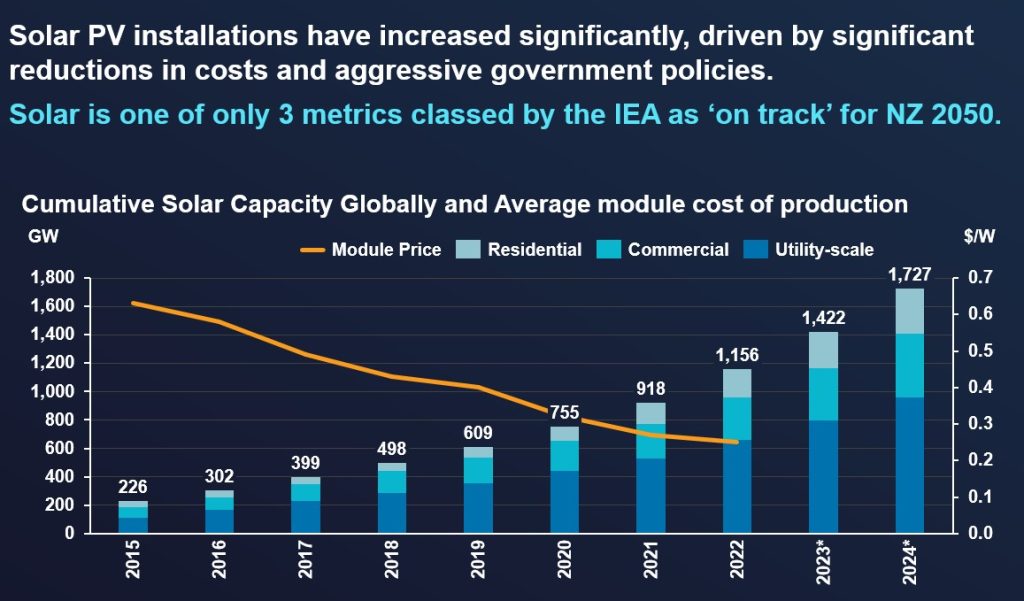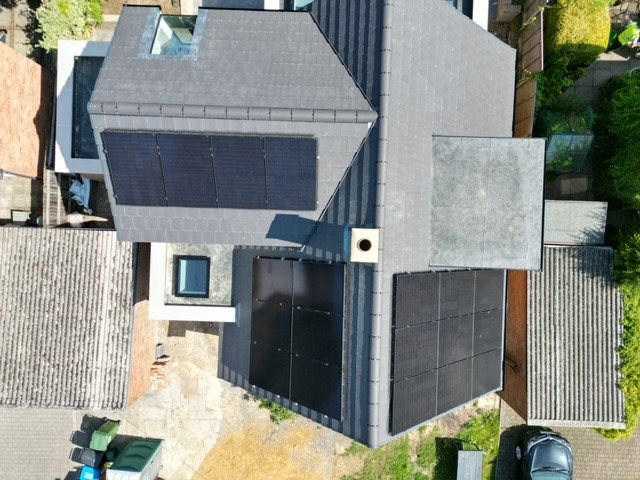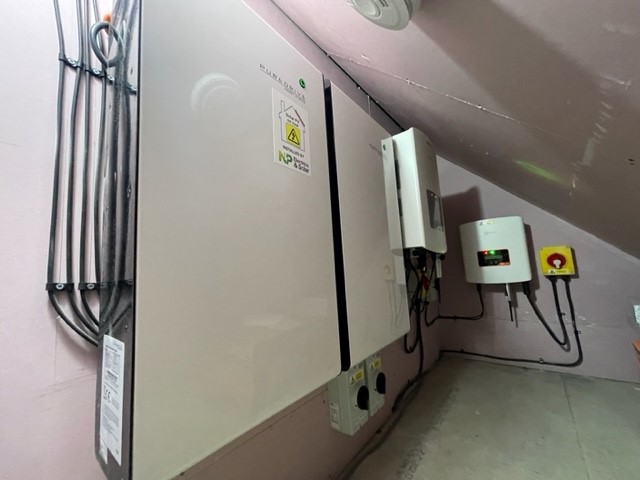Introduction:
With two electric cars and electrification of our heating we wanted to offset some of our impact on grid electricity and save costs by installing our own generation. Over the past decade, there has been a substantial decrease in the cost of solar panels, making solar PV (photovoltaic) a compelling investment despite the diminished financial support for domestic solar in the UK and several other countries. Coupled with the escalating cost of grid electricity, solar PV, especially when partnered with battery storage, presents an opportunity to reduce reliance on the grid and consequently lower energy costs.

Global Growth
Growth has been seen across the solar industry across Utility scale, Commercial and Residential. As you can see this is driven by the steep decline in costs. The intermittency of solar however is also leading to increases in BESS (Battery Energy Storage Systems) to complement this inherent variability. I look at Grid scale batteries in my work and it was also an important addition to my home project.
The Prosumer Movement:
Joining the ‘prosumer’ bandwagon means wearing two hats: a consumer and a producer of electricity. While individual off-grid installations may not place a massive strain on the grid, collectively, they can significantly impact the grid. Therefore, it’s crucial to notify your area’s Distribution Network Operator (DNO) to understand any associated limits or obligations. In our case, we informed UKPN, and the process was hassle-free. As a producer, you can get remunerated for the power you export to the grid, although the returns may be modest. However, it’s worth noting that a virtual export meter is required for this, something we set up based on our smart meter.
Financial Considerations:
The economic case for a solar system with batteries can be complex, depending on various factors. At its most basic, it’s about comparing the cost of grid electricity with your solar system’s potential savings. With peak electricity costs hovering between 35 – 40p/kWh, our solar installation could potentially save us up to £16 per day, assuming we can utilise all the generated electricity. However, since the remuneration for exporting to the grid is considerably lower (4.1p/kWh), there’s a clear incentive to store and use our solar-generated electricity ourselves. Based on this, we anticipate achieving payback within approximately 8 or 9 years.

Our Project:
Our roof space allowed us to install 7.5kW of solar panels on three roof sections facing East, South, and West, which ensures we generate electricity for a significant part of the day. The system, equipped with two inverters, connects to 10kWh of batteries that discharge down to 20%. In the summer months, the system can generate over 40kWh per day, and our main challenge lies in optimising the usage to minimise grid export.
We had excellent support from local firms with experts in the field who guided us throughout the process. Nicky and Jan from www.np-electrics.co.uk and www.sunsible.co.uk respectively and their teams provided not only the solution but also detailed explanations and guidance. Note, I’ve not been paid to mention these but happy to provide a point of contact for those looking (if you live around Hertfordshire!).

Conclusion:
Our solar investment has already yielded significant electricity cost reductions and has allowed us to primarily rely on our own generated power. Our heating, mobility, and daily needs are largely covered by our solar generation during summer, while winter grid demands will also be reduced. The UK’s solar industry is mature, with considerable competition and a wide array of batteries and panels available. However, there is still potential for improvement in system integration, and the need for manual meter readings is somewhat frustrating. Managing our energy use remains somewhat complex, a topic we’ll delve deeper into in the next blog.
Fact: According to SolarPower Europe, the UK added 545 MW of solar PV capacity in 2020, and the total installed capacity stood at 13.5 GW by the end of the year, reflecting the steady growth of this renewable energy source in the UK. However, vs European peers, data from 2022 and 2023 show a slower uptake. A consideration to both residential PV and commercial PV systems is something we actively look at.
We’ve thought about the impact of distributed solar a number of times and you can read more here Transparency in long-term electric demand forecasting: a perspective on regional load forecasting | Insights & Events | Charles River Associates (crai.com)

